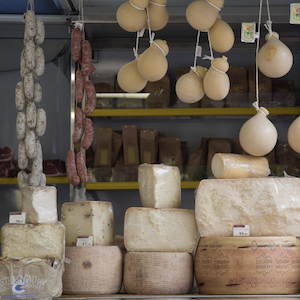Sharing Food is Sharing Love
By Mary Wheelehan
As an American in London, I can’t help but miss Thanksgiving. Celebrated in the United States every year in November, Thanksgiving Day is a chance to visit loved ones and share a great feast, traditionally including a turkey big enough to feed the whole family. The most important part of Thanksgiving, regardless of what is served, is that everyone is welcome at the table.
Good food has a way of bringing people together. When we prepare and enjoy a meal, when we learn a new recipe or try an unfamiliar dish, we are sharing in a story, perhaps a story that has been being told since long before we were born. Recipes can be cultural emissaries, helping us to learn about others through the food that gives life through the week and perfects the celebration of a sacred holiday. Cookbooks, then, are not just lists of recipes and instructions; they are representations of who we are.
Leah Koenig, prolific writer and chef, aims to communicate this in her newest book release, The Jewish Cookbook, published by Phaidon press this fall. Although this is Koenig’s sixth cookbook featuring Jewish cuisine, it feels entirely unique from her past work; featuring some 400 recipes and an in-depth introduction to Jewish culture and food. The Jewish Cookbook aims to introduce Jewish and non-Jewish readers alike to food served by Jewish families around the world.

Although the title The Jewish Cookbook can imply that the book contains the definitive recipes of Jewish culture, Koenig insists that there is no singular definition of Jewish food. As she writes in her introduction, “I am regularly asked, ‘How do you define Jewish food?’ My answer is always the same: ‘That depends entirely on whom you ask.’”
The Jewish Diaspora created an incredible diversity between Jewish communities. As families resettled across the globe, they had to adapt their cooking to the different availability of spices and fresh ingredients, determining what recipes could be prepared and passed down to be enjoyed generation after generation. As a result, Jewish dishes look and taste different depending on where they are prepared. Even traditional Jewish customs are followed differently across the globe; as Koenig explains, each Jewish family determines its own relationship to the restrictive rules of keeping Kosher and serving certain foods on holidays. To reflect all of this diversity in Jewish cooking, The Jewish Cookbook aims to include as many Jewish communities as possible, featuring recipes from all over the world.
The design of the book undoubtedly helps to accomplish these literary intentions. Released by Phaidon, a publisher internationally renown for artistic productions, The Jewish Cookbook is a physically beautiful text, featuring detailed images of dishes and brief stories about significant dishes alongside their recipes. Koenig’s book would be incomplete without the images of her dishes; they not only provide culinary guidance, they also communicate the story of Jewish culture she is sharing with her readers.


Images of food, like those featured in Koenig’s book, are on display everywhere, from social media posts to billboards to the spreads of magazines. Images of food have powerful significance; they have symbolic meaning, emotional weight. Food photography is another way of telling a story through sharing a meal. In London, the Photographers’ Gallery is exploring food photography and its implications for storytelling though a new exhibition, Feast for the Eyes – The Story of Food in Photography.
The images featured in Feast for the Eyes tell a story, each framed within a camera’s lens. Each exhibited image is classified into one of three main focuses of the exhibition: Still Life, which explores the relationship of food photography to the popular genre of painting; Around the Table, which examines the rituals that take place during meals; and Playing with Food, which demonstrates the effects of uniting food photography with humor and lightheartedness.
The exhibition is unique because of its inclusivity. A wide variety of food photography is on exhibit, from early experiments with color imaging to advertisements to the modern work of today’s artists. Even magazines and cookbooks—books similar to Koenig’s The Jewish Cookbook—are on display, helping to tell the human story of food. Susan Bright, co-curator of Feast for the Eyes, offers this statement on the significance of food photography and her new exhibition: “Food—and how it is photographed—defines how we live and how we value ourselves, and, at its very best, connects us to our dreams and desires.”
As the holiday season approaches, families will gather to prepare and enjoy delicious food together, telling their stories both in conversation and in the rich spread on the table. As The Jewish Cookbook and Feast for the Eyes demonstrate, our food is part of us, and by sharing it, we share a bit of our cultures, our histories, and ourselves.
Purchase The Jewish Cookbook by Leah Koenig here.
Check out the Photographers’ Gallery Feast for the Eyes exhibition here.





